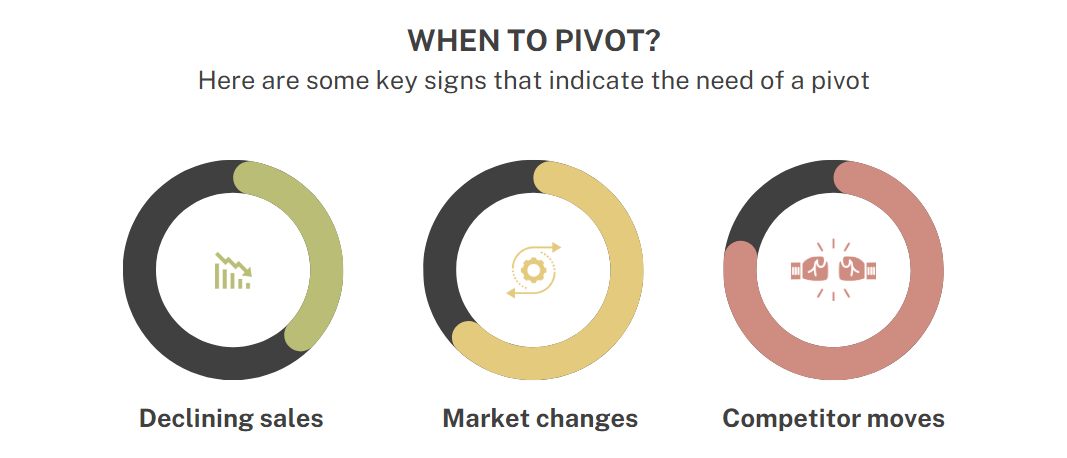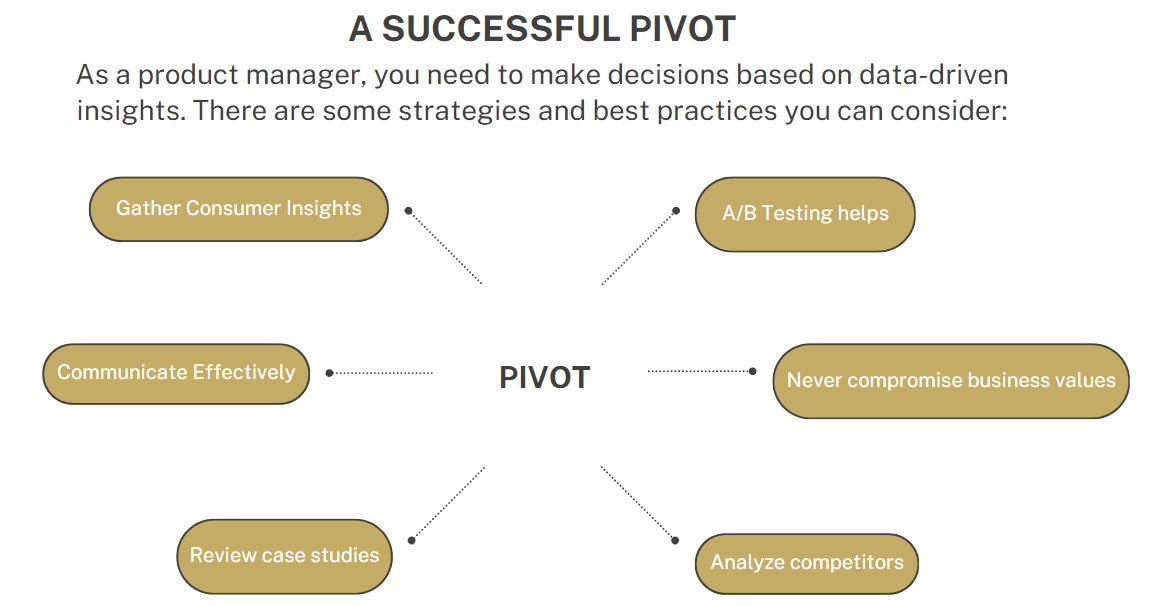The current landscape of business is fast-paced and ever-evolving. Products need to have the flexibility to adapt and change direction if needed. Flexibility can be the deciding factor for success.

This is where the concept of pivoting comes into play. A pivot refers to the process of changing a business’s strategy. The strategy can be related to the product, target market, or even a current business model.
The goal of a pivot is to better align the business or the product with the market. It’s a strategic maneuver that allows you to stay relevant.
Today you’ll learn about the fundamentals of a pivot, why a pivot is needed, and how a pivot impacts the product. You’ll also look at how to recognize the need for a pivot. Additionally, you’ll explore some strategies that product managers utilize to carry out successful pivots.
A pivot is a strategic decision to change a significant part of your business’s approach. It can include a change in product offerings, target market, or even the entire business model.
If you look at different products, pivots are common. For instance, a ride-sharing app might start offering train rides (that’s what Uber is doing in the UK).
A pivot helps organizations (established or start-ups) to seek better growth opportunities and respond swiftly to market feedback. However, pivoting isn’t about abandoning your business’s core values or vision. Think of it as a way to find the most effective way to achieve those goals given the current market conditions.
A pivoting maneuver is often necessary when the original business model or product isn’t hitting the mark. In such a scenario, a change is needed to unlock growth or expand the user base.
Pivoting allows businesses to align more closely with customer needs and market demand.
It provides a chance to tap into new markets or sectors, potentially leading to significant growth.
In a rapidly changing market, pivoting can help businesses stay relevant and competitive.
Although pivoting can open up a world of opportunities, it does come with its own set of challenges. Businesses must carefully consider these before changing course as:
Successful pivots require thorough market research and a clear understanding of customer needs. Your input as a product manager can greatly impact the success of a pivot.
Like most product strategies, the risks involved with a pivot are real but the potential rewards are even greater.
Recognizing the need to pivot is crucial for products aiming to stay ahead of competitors. Often, the signs calling for a pivot are subtle. As a product manager, you’ll need to identify them early on:

A pivot requires a keen understanding of your business, the current market, and consumer behavior.
Here are some key signs that indicate the need for a pivot:
A lot of product managers view a pivot as an admission of failure. It’s definitely not! Instead, think of it as a proactive step towards finding a better path to success. Taking calculated risks reflects a business’s agility and commitment to meeting its customers’ needs.
To execute a successful pivot, a business needs careful planning and strategic insight. It all leads to a deeper understanding of your target market. As a product manager, you need to make decisions based on data-driven insights:

There are some strategies and best practices you can consider:
Let’s analyze some examples of successful pivots of mega-scale products. The insights from these examples can inform your own approach to pivots.
Initially, it started as a gaming company called Tiny Speck. It pivoted to become a messaging app for teams, capitalizing on the communication tool it developed for internal use. This pivot transformed Slack into a billion-dollar business.
Before becoming the photo-sharing giant, Instagram was Burbn. A simple check-in app that included gaming and photo-sharing features. The pivot to focus solely on photo sharing propelled Instagram to a unicorn status.
Understanding the difference between a pivot and a complete business overhaul is essential. This knowledge is important to determine the right strategy at any given time:
A pivot is appropriate when there are strong elements of the business that work well but need redirection. A complete overhaul makes sense when the business model no longer fits the current market.
This strategic shift, while necessary, can be fraught with hurdles. They range from internal resistance to market uncertainties. Once you understand the core of these challenges, you get one step closer to overcoming them.
Some common complications include:
Engage with employees and stakeholders as early as possible as it helps to build a supportive environment for change. Alongside this, market research and pilot tests can reduce uncertainties. With a solid base, you’ll have more flexibility to refine the pivot strategy later.
For many products, it’s hard to survive and grow without a pivot strategy. As a product manager, the best approach is to develop a deep understanding of how and when to pivot.
The following takeaways will serve you as a guiding light:
When you embrace the challenges and leverage these best practices, it makes all the difference in this journey.
Featured image source: IconScout

LogRocket identifies friction points in the user experience so you can make informed decisions about product and design changes that must happen to hit your goals.
With LogRocket, you can understand the scope of the issues affecting your product and prioritize the changes that need to be made. LogRocket simplifies workflows by allowing Engineering, Product, UX, and Design teams to work from the same data as you, eliminating any confusion about what needs to be done.
Get your teams on the same page — try LogRocket today.

Most teams fail at autonomy. Learn how clear rules help product teams move faster without micromanagement.

A practical framework for PMs to use AI in ideation without sacrificing judgment, strategy, or decision quality.

A practical five minute revenue estimation method to help product managers compare ideas, drop low impact features, and prioritize smarter.

A practical guide for PMs who want to stop being bottlenecks, delegate smarter, and lead teams effectively with a clear ownership framework.